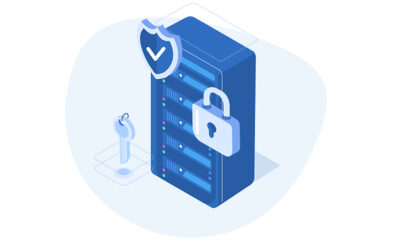Looking to create successful sponsorship packages for your upcoming event? Our comprehensive guide covers everything you need to know, from identifying potential sponsors to crafting compelling proposals that will help you secure the funding you need to make your event a success.
Creating a successful event requires strategic planning, with one of the most important aspects being the development of effective sponsorship packages. These packages play a vital role in both the organization and funding of your event, as well as providing benefits for your sponsors. In this article, we will discuss the process of crafting the perfect sponsorship packages for your event, from understanding their importance to presenting a compelling proposal to potential sponsors.
Understanding the Importance of Sponsorship Packages
Sponsorship packages provide the necessary financial support and additional resources for organizing a successful event. However, their significance goes beyond just funding. To truly appreciate the importance of sponsorship packages, it is essential to consider both the event organizer’s and the sponsor’s perspectives.
The role of sponsorships in event success
For event organizers, sponsorships offer numerous advantages, such as reducing the overall cost of the event, enhancing event production value, and increasing audience reach. By partnering with well-established brands, events can also gain credibility and attract more attendees. Moreover, sponsors can provide valuable resources, such as promotional material, industry expertise, and networking opportunities, all of which contribute to the overall success of the event.
For instance, a sponsorship package may include a keynote speaker who is an industry expert and can share insights on the latest trends and developments. This not only adds value to the event but also helps the sponsor establish themselves as a thought leader in their field. Additionally, sponsors can provide branded merchandise, such as T-shirts or tote bags, which can be given as giveaways to attendees, increasing brand awareness and visibility.
Another advantage of sponsorships is that they can help event organizers access new markets and audiences. For example, if an event is targeted at a specific demographic, partnering with a sponsor who caters to that audience can help the event reach a wider audience and increase attendance.
Benefits of well-crafted sponsorship packages for both parties
From the sponsor’s point of view, an effective sponsorship package should provide a clear return on investment. Be it through increased brand visibility, direct sales opportunities, or access to a targeted audience, a well-crafted sponsorship package enables the sponsor to achieve their marketing and business goals. In turn, by offering attractive packages that deliver genuine value, event organizers can build long-lasting relationships with sponsors, ensuring ongoing support for future events.
For instance, a well-crafted sponsorship package may include opportunities for the sponsor to showcase their products or services to the event attendees. This can be done through product demos, interactive displays, or even sponsored sessions. By providing such opportunities, the sponsor can generate leads and sales, while also building brand awareness and loyalty.
Looking for ideas how to integrate sponsorships into your event? We’ve gathered 37 creative sponsorship ideas that will help you build your event sponsorship strategy.
Moreover, a successful sponsorship package should be tailored to the sponsor’s specific needs and goals. This means that event organizers need to understand the sponsor’s target audience, marketing objectives, and budget. By doing so, they can create a package that delivers maximum value to the sponsor, while also aligning with the event’s overall goals and objectives.
In conclusion, sponsorship packages are a vital component of event planning and organization. They provide the necessary financial support and resources, while also offering numerous benefits to both the event organizer and the sponsor. By creating well-crafted packages that deliver genuine value, event organizers can build long-lasting relationships with sponsors, ensuring ongoing support for future events.
Identifying Your Target Sponsors
Finding the right sponsors for your event is critical for ensuring mutual benefit and success. To achieve this, thorough research and a clear understanding of both your event and the potential sponsor’s values and objectives are essential. In this section, we will discuss some effective ways to identify your target sponsors and how to align your event with their values and goals.
Researching potential sponsors
Begin by identifying potential sponsors within your event’s industry or those whose target audience aligns with your event demographics. This can be done by conducting a thorough search online, attending industry events, and networking with professionals in your field. Once you have a list of potential sponsors, it’s time to dig deeper and investigate their past sponsorship activity.
Examine how their involvement contributed to the success of other events. Did they receive positive feedback from attendees and other sponsors? Did their sponsorship generate significant media coverage? This research will provide you with valuable insights and help you create a list of potential sponsors that are most likely to be interested in partnering with your event.
Don’t forget to also consider the size of the company and their budget for sponsorships. While it may be tempting to go for the biggest names in the industry, smaller companies may also be interested in sponsoring your event and can offer unique opportunities for collaboration.
Aligning your event with sponsor values and goals
Once you have a list of potential sponsors, analyze their brand values, mission statements, and marketing objectives to ensure a proper alignment with your event. This alignment is crucial for both parties, as it establishes a foundation for creating customized sponsorship packages that cater to the sponsor’s interests and goals, while also benefiting your event.
For example, if your event promotes sustainability and eco-friendly practices, look for sponsors who share these values and have demonstrated a commitment to environmental responsibility. Or, if your event targets a specific demographic, such as millennials or families, seek out sponsors whose products or services align with their interests and needs.
When approaching potential sponsors, be sure to highlight how your event aligns with their values and goals. This will show them that you have done your research and are serious about creating a mutually beneficial partnership.
In conclusion, identifying your target sponsors and aligning your event with their values and goals is essential for creating successful partnerships. By conducting thorough research and analyzing potential sponsors’ brand values and objectives, you can create customized sponsorship packages that benefit both parties and contribute to the success of your event.
Establishing Sponsorship Levels and Benefits
One of the keys to crafting compelling sponsorship packages is offering various sponsorship levels, each with its own unique set of benefits. This approach enables sponsors to choose the option that best suits their objectives and budget, while also allowing you to maximize your revenue potential.
Creating tiered sponsorship packages
Start by determining the number of sponsorship levels you want to offer, with common options including three to five tiers. Common naming conventions include Platinum, Gold, Silver, and Bronze, but you can also use creative or industry-specific names. Make sure each level provides incremental benefits, clearly differentiating them from one another.
For example, a Platinum sponsorship package might include all of the benefits of the Gold and Silver packages, plus exclusive access to VIP events, a dedicated email blast to attendees, and a full-page ad in the event program. A Gold package might include all of the benefits of the Silver package, plus a larger booth space and a speaking opportunity during a keynote session. A Silver package might include logo placement on event signage and promotional materials, a smaller booth space, and the opportunity to host a breakout session.
Determining appropriate pricing for each level
While pricing your sponsorship packages, consider factors such as your event’s size, reputation, location, and target audience. Research similar events in your industry to see what they charge for their sponsorship levels, and analyze the benefits they offer. Using this information as a guide, determine a pricing structure that reflects the value of each sponsorship level while remaining competitive and attractive to potential sponsors.
Not sure yet how to price your different sponsorship levels? Here is an example.
For example, if you are hosting a large industry conference in a major city, you may be able to charge a premium for your Platinum sponsorship package, as it offers exclusive access to high-level executives and decision-makers. On the other hand, if you are hosting a smaller, regional event, you may need to price your packages more affordably to attract sponsors.
Offering unique and valuable benefits to sponsors
To create compelling sponsorship packages, ensure that the benefits you offer cater to the sponsors’ marketing and business objectives. Examples of possible benefits include logo placement, booth space, speaking opportunities, product sampling, social media promotion, and direct access to attendee lists. The higher the sponsorship level, the more exclusive and valuable the benefits should be.
For example, a Platinum sponsor might receive a private meet-and-greet with a keynote speaker, while a Gold sponsor might receive a dedicated social media post promoting their brand. A Silver sponsor might receive a mention in the event program and a product sampling opportunity. By offering unique and valuable benefits, you can differentiate your sponsorship packages from those of your competitors and attract more sponsors to your event.
Ultimately, the key to successful sponsorship packages is to offer a range of options that appeal to a variety of sponsors, while also providing clear and valuable benefits at each level. By taking the time to craft compelling sponsorship packages, you can increase your revenue potential and create a more successful event.
Customizing Sponsorship Opportunities
While tiered sponsorship packages provide a solid foundation for attracting sponsors, customization can make your event stand out and help secure more partnerships. Tailoring packages to meet the unique needs of each sponsor can go a long way in fostering successful, long-lasting relationships.
Customization is the key to creating a successful sponsorship program. By offering tailored sponsorship packages, you can attract more sponsors and provide them with the specific benefits they are looking for. This approach can help you build long-term relationships with sponsors and ensure their continued support for your event.
Tailoring packages to meet sponsor needs
When approaching potential sponsors, take the time to learn about their specific goals and requirements. This information will enable you to adapt your standard sponsorship packages to better accommodate their needs. For instance, if a sponsor values direct engagement with your attendees, consider offering them a branded interactive experience or workshop at your event.
By tailoring your sponsorship packages to meet the specific needs of each sponsor, you can provide them with the benefits they are looking for and ensure their satisfaction with your event. This can lead to increased sponsor retention and more successful partnerships in the future.
Incorporating sponsor branding and messaging
Including the sponsor’s branding and messaging in your event not only helps them achieve their marketing objectives but also reinforces their commitment to your event in the eyes of attendees. Find creative ways to integrate their logos, slogans, and even brand colors throughout your promotional materials, signage, and event décor.
By incorporating sponsor branding and messaging into your event, you can create a more cohesive and memorable experience for attendees. This can also help sponsors achieve their marketing goals and increase their brand awareness among your audience.
Providing exclusive opportunities for top-tier sponsors
To entice sponsors to invest in the highest sponsorship level, offer them exclusive opportunities that provide exceptional value. Examples include prominent logo placement, headline sponsorship of a keynote speech, or the chance to host a VIP networking event. These exclusive opportunities should provide a significant return on investment for your top-tier sponsors, justifying their larger financial commitment.
Providing exclusive opportunities for your top-tier sponsors can help you attract and retain their support for your event. By offering them unique and valuable benefits, you can ensure their satisfaction with your sponsorship program and encourage them to continue their partnership with your organization.
Creating an Effective Sponsorship Proposal
An impactful sponsorship proposal is key to securing sponsors for your event. This document should showcase your event’s value proposition, highlight the benefits of each sponsorship level, and demonstrate the potential return on investment for the sponsor.
Are you hosting a virtual event? Here are 7 tips to get your sponsors onboard.
Presenting your event and its value proposition
Begin your proposal by providing an overview of your event, including its purpose, target audience, expected attendance, and unique features. Explain how sponsoring your event aligns with the potential sponsor’s values, goals, and target market. Clearly articulate the reasons why your event is the ideal partnership opportunity for them.
Highlighting the benefits of each sponsorship level
Detail the various sponsorship levels available and clearly outline the benefits offered at each tier. Use visuals, such as tables or graphics, to make the information more accessible and appealing. Emphasize the benefits that are most relevant to the potential sponsor’s needs and objectives, demonstrating how partnering with your event will provide them with a tangible return on investment.
Including testimonials and case studies from past sponsors
To further strengthen your proposal, include testimonials and case studies from previous sponsors, showcasing the positive impact your event had on their brand and business objectives. These success stories can help potential new sponsors visualize the benefits they can expect from partnering with your event.
In conclusion, crafting the perfect sponsorship packages for your event requires a strategic and tailored approach. By understanding the importance of sponsorships, researching potential sponsors, offering flexible and customizable packages, and presenting an effective proposal, you will increase your chances of securing valuable partnerships and ultimately ensuring the success of your event.



